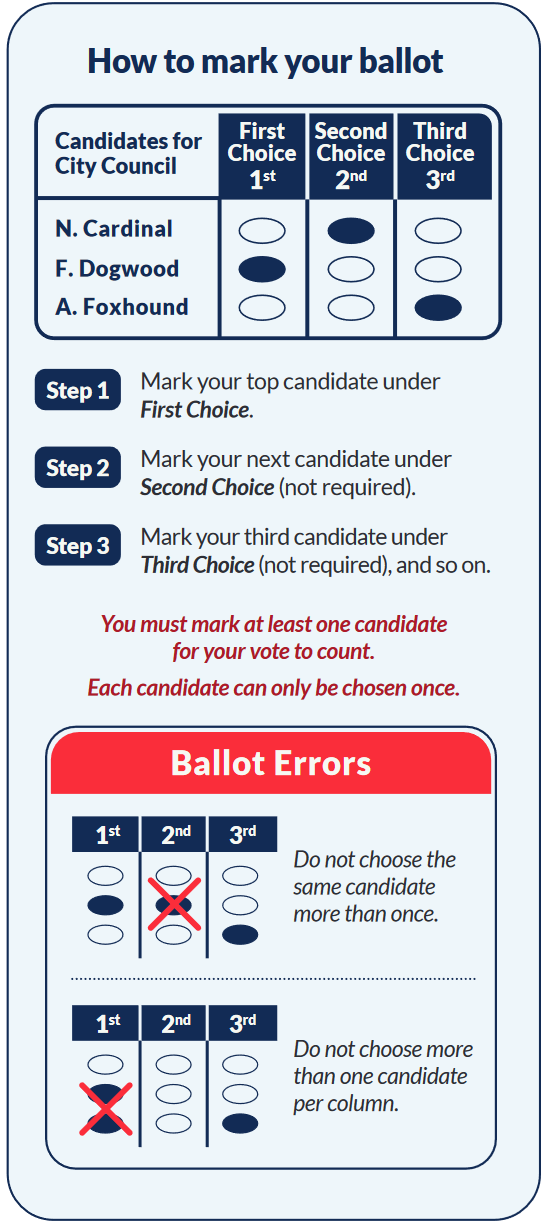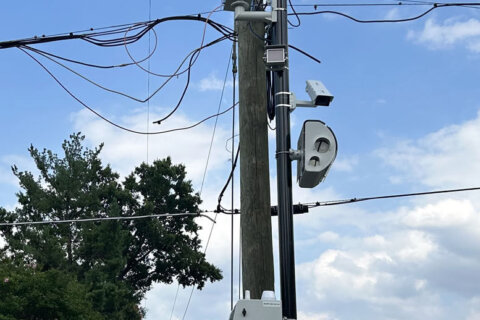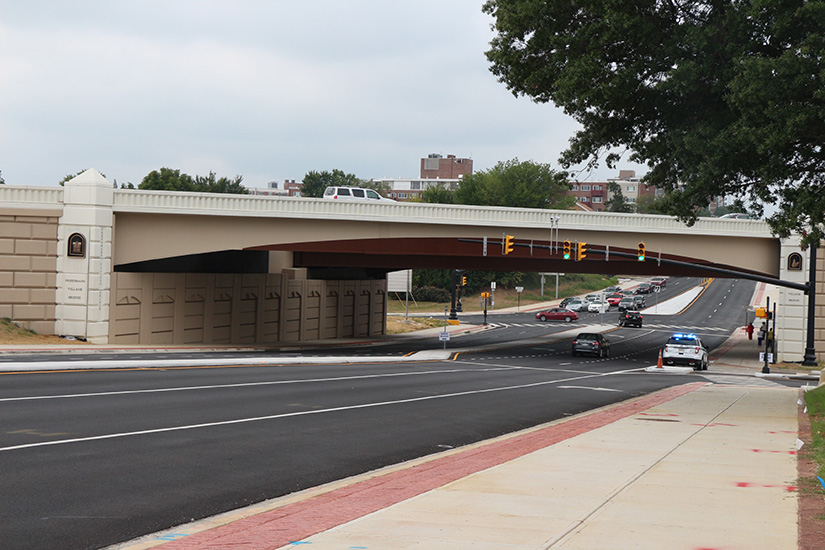Arlington County voters might notice something a little different on the Democratic primary ballot this June in the race for the County Board of Supervisors: Instead of making one choice, they’ll have up to three.
Arlington is leading the charge in Virginia by introducing ranked choice voting, or RCV, for its 2023 primaries. Voters will be able to rank three candidates in order of preference, marking a pivotal shift in voting for both Virginia and the D.C. region as a whole. Even if you’re not an Arlington voter, you’ll want to pay close attention — other localities in the area are also considering this system for future elections.
Here’s a comprehensive guide to understanding and navigating this new voting system.

Q: What is ranked choice voting?
Ranked choice voting is an alternative voting system where voters can rank candidates by order of their preference: First choice, second and third.
That doesn’t mean you’ve got more than one vote — it’s still one person, one vote, but the difference is your vote might be transferred to your other choices if there isn’t a clear winner.
We’ll get into more detail how that works below, but the gist is that RCV is designed to ensure people still have a voice if their first choice for office doesn’t make it through.
Q: How does rank choice voting work?
Voters make their first choice in a race. After the polls close, these first-choice votes are tabulated. If no candidate receives the required number of votes to secure a victory, the candidate with the least number of votes is eliminated.
The votes for the eliminated candidate are then transferred to the voter’s second choice. That process repeats until a winner emerges, or if there are multiple seats to fill, until enough candidates have reached the required threshold.
Here’s a simpler way of looking at it. You’ve got three favorite flavors of ice cream: Peanut butter, banana, and orange creamsicle, in that order. You waltz down to your local ice cream parlor, only to find out they’re fresh out of peanut butter but down to their final scoop of your runner-up, banana.
Sadly, somebody robs you of it before you’ve made it to the front of the line. But that’s all right, because it turns out your third choice, orange creamsicle, is readily available. In the end, you get the flavor you like most that’s still available.
Q: How do I mark my ballot?
Whether voting by mail or in person, you’ll see three columns on your ballot under the “Member County Board” race. The Democratic primary race features six candidates, none of whom are incumbents. Two will be elected to four-year terms. WTOP’s Virginia voter guide has a list of the candidates and links to their campaign websites.
To indicate your preferences, fill in the bubble under the column labeled “1” for your first choice. Mark your second and third choices under columns “2” and “3,” respectively. Election officials offer a simple guide on their website showing how this looks, along with an interactive feature to practice marking an RCV ballot.
Q: I’m worried I’ll mess this up. What shouldn’t I do?
Mark down only one choice per column and avoid selecting the same candidate more than once (in other words, a candidate can’t be both your first and second choice). If you rank a candidate in multiple columns, your vote for that candidate will only count once and won’t enhance their winning chances.
Remember: You’re not obligated to rank every candidate or have three picks. You can rank as few or as many candidates as you like. You can put down a single candidate as your first choice, or have two preferences but not a third, and leave it at that. Just be aware that if there isn’t a clear winner and candidates are eliminated, your ballot won’t count in later rounds.
Q: Why is Arlington doing this? Has anyone done this before?
The Virginia General Assembly amended state law in 2020, allowing local officials to implement ranked choice voting in elections for city council and county board of supervisors. Arlington County is the first locality in Virginia to begin using it, but the state Republican Party previously used the method for its 2021 statewide nominating elections.
Nationally, Arlington is far from the first to do this. As of now, more than two dozen states have implemented ranked choice voting in some capacity. Notably, Alaska and Maine now use the system for most state and federal-level elections.
Last year, the Arlington County Board unanimously approved a pilot program allowing voters to list three choices for the 2023 primaries. The county is currently considering replacements for its aging voting machines that would allow for six or more preferences in the future.
Even if you’re not an Arlington voter, it’s still worth familiarizing yourself with the way ranked voting works — because odds are if you’re in the D.C. region, it’ll be coming soon to a ballot near you.
Several other Virginia localities are considering the system for the upcoming November general election, while D.C. is mulling a major ballot initiative that proposes a shift to RCV and open primaries. Advocates for ranked choice also want to get the ball rolling in Maryland.
Q: What are the benefits? Any cons?
The big selling point of RCV is that it gives voters a say in who gets elected if their first preference isn’t chosen. According to the Arlington Electoral Board, RCV promotes positive campaigning and fosters candidate diversity. Competing to be a voter’s second or third choice encourages candidates to broaden their appeal beyond their base.
A drawback of RCV is that results can’t be determined until all ballots have been processed. That means Arlington voters might see a delay in learning the election results — especially if second or third choices are taken into account.
Election officials note that confirming the county board primary’s two winners could take up to a week after the polls close on June 20. This delay, however, won’t affect other elections on the ballot that are not utilizing ranked choice.








